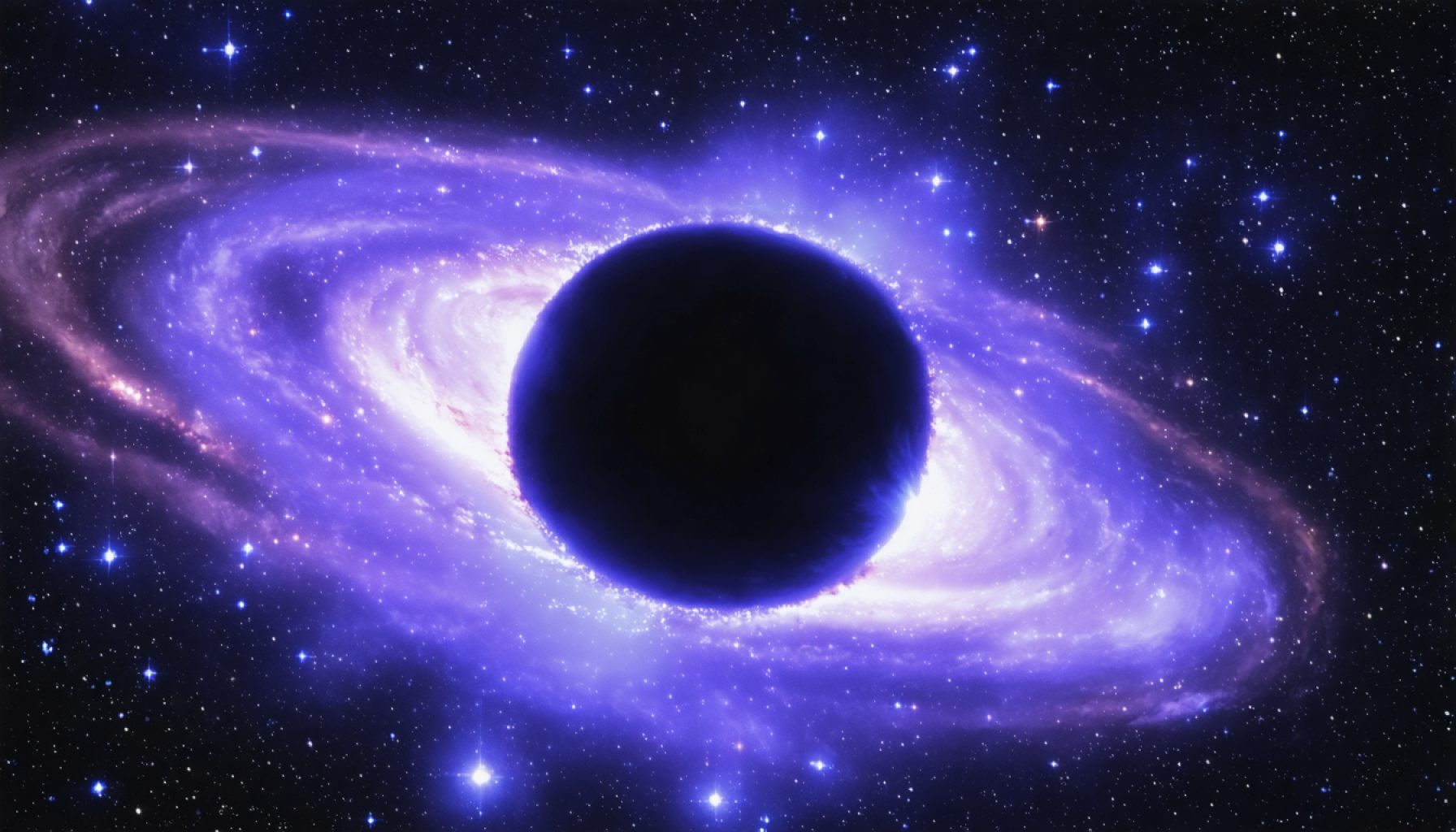
- Astronomers discovered a supermassive black hole within the Large Magellanic Cloud, a satellite galaxy of the Milky Way.
- This black hole, with a mass 600,000 times that of the Sun, was identified by tracking hypervelocity stars using the ESA’s Gaia satellite.
- The movements of these stars, propelled to high speeds, pointed to the influence of this cosmic entity.
- The LMC’s motion around the Milky Way adds momentum to these stars, confirming the presence of the black hole.
- This finding highlights the complexity of the local cosmic environment and the subtle clues that reveal hidden forces.
- The discovery informs future exploration and enhances our understanding of galactic dynamics.
A cosmic giant, long masked by the breadth of the universe, has now been uncovered in the neighboring Large Magellanic Cloud (LMC), one of the Milky Way’s satellite galaxies. Astronomers, akin to celestial detectives, discerned this clandestine supermassive black hole through the meticulous observation of stars racing at dizzying speeds across our galactic neighborhood.
These swift travelers, known as hypervelocity stars, offered the critical clues. Launched on trajectories that defy galactic boundaries, their movements were captured with surgical precision by the European Space Agency’s Gaia satellite. The sprawling network of data it provided allowed researchers to trace the stellar pathways backward through the cosmic tapestry, unwinding their journeys to an unexpected source.
This hidden behemoth resides in the LMC, sending one half of sterllar pairs spiraling into its gaping maw while the other half is hurled into the void at velocities reaching millions of miles per hour. Such dynamic expulsions screamed of the presence of a gargantuan entity — a supermassive black hole with a mass approximately 600,000 times that of our Sun, dwelling just beyond our galactic doorstep.
The astronomers’ deduction is akin to unraveling a cosmic game of billiards, where the LMC, in its orbital dance around the Milky Way, provides additional momentum to the ejected stars. This propulsive mechanism creates a distinctive cluster of high-speed stars, vividly painted across the backdrop of our universe.
With no plausible alternative astrophysical explanations for this stellar stampede — no stellar explosions or other disruptive stellar mechanics could account for such focused acceleration — the conclusion is as compelling as it is profound. A supermassive ravenous entity lurks nearby, rivaling, yet shadowed by, our own Milky Way’s central black hole, which boasts a heft of about 4 million solar masses.
This discovery underscores the intricacy and dynamism of our backyard universe. While supermassive black holes may remain elusive, their gravitational influence sends ripples through the cosmos, broadcasting their presence to those attuned to listen. As the LMC continues its dance, its celestial secret stands bared, transforming our understanding of the local cosmic landscape.
Unlocking the riddles of such hidden giants not only enriches our grasp of the galactic past but also informs the future endeavors of celestial exploration. Indeed, the universe reveals its wonders in whispers — if we have the tools to hear them.
Astronomical Discovery: Unveiling the Hidden Supermassive Black Hole in the LMC
New Insights and Analysis
In a remarkable leap forward in our understanding of the cosmos, the recent uncovering of a supermassive black hole in the Large Magellanic Cloud (LMC) has sent ripples through the astronomical community. This discovery not only shakes up our perception of nearby galaxies but also highlights the pivotal role technology and data analysis play in modern astronomy.
How to Spot a Hidden Giant: Steps in Unveiling the LMC Black Hole
1. Collect Comprehensive Data: Leverage cutting-edge tools like the European Space Agency’s Gaia satellite, which tracks hypervelocity stars with unprecedented accuracy.
2. Analyze Stellar Movements: Focus on high-speed stars, tracing their journey and speeds to understand their unusual trajectories.
3. Identify Influencing Forces: Consider potential astrophysical factors influencing these stars’ movements, ruling out common phenomena like explosions.
4. Conclude with Calculation: Use mathematical models to understand the mass and influence range of mysterious cosmic entities.
Real-World Uses and Impact
The discovery of such a black hole is far from academic; it has direct implications for our understanding of galaxy formation and dynamics. These findings can inform:
– Space Travel Projections: By understanding the gravitational influences nearby, planning safer space missions becomes feasible.
– Astrophysical Models: Adjusting existing models of galaxy formation and behavior, potentially refining predictions about the future interactions between the Milky Way and the LMC.
Industry Trends and Future Predictions
Astronomy is in an era of unprecedented precision and exploration, driven by advancements in technology such as satellite data collection and large-scale data analysis:
– Increased Investment: Expect growing funding into space observation technologies. With the success of missions like Gaia, more countries and private companies will aim to launch similar explorations.
– Collaborative Endeavors: Greater international collaboration on space exploration projects is essential to foster sharing of expertise and resources.
Controversies and Limitations
While the findings represent a breakthrough, it’s crucial to discuss the challenges and debates:
– Data Interpretation: Delicate balance between data accuracy and overreliance can be contentious. Misinterpretations could lead to false conclusions.
– Unseen Variables: Astrophysical phenomena that haven’t been observed yet could offer alternative explanations, challenging established theories.
Pros and Cons
Pros:
– Enhanced understanding of nearby cosmic structures.
– Technological advancements bolster successful observations.
Cons:
– High resource demand, requiring significant investments.
– Risk of misinterpretation of complex data sets.
Actionable Recommendations
– Stay Updated: Enthusiasts and professionals should continually follow updates from missions like Gaia. Engage with platforms like ESA for the latest news.
– Engage in Discussions: Participate in seminars and workshops to explore the implications of such findings further.
– Educational Outreach: Encourage educational programs that foster interest in astronomy and data science, critical fields in unlocking cosmic secrets.
By using these insights, researchers and hobbyists alike can contribute to a deeper understanding of our universe, unlocking cosmic mysteries one discovery at a time.



